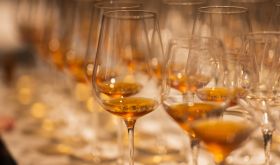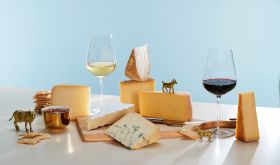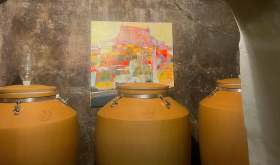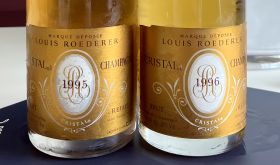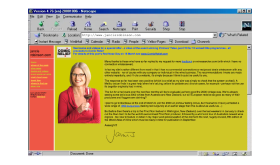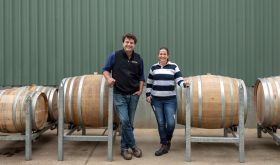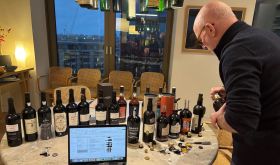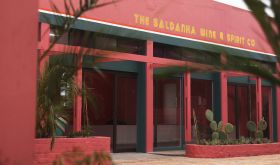Though the most dramatic changes wine undergoes occur during fermentation and élevage (the period between fermentation and bottling), wine remains dynamic until the moment of its consumption.
Of course, for most wines, that moment is not too long after the wine was bottled. But for that rare subset of wines designed to age well over years or even decades, what happens inside the bottle?
This is a question that experts are still actively chewing on, which makes it one of the most enduring mysteries of wine. It’s complicated, as a wine’s sensory impression is the sum of a number of attributes – aromas, colour, alcohol content, acidity, tannins, sometimes sweetness or bubbles. Ageing affects each of these elements in unique ways.
Furthermore, not all wines mature along the same trajectory. Most wines are not improved by long periods of ageing; of those that are, the rate of ageing is dependent not only on the composition of the wine but also its storage conditions. These variables make accurately predicting the performance of a given bottle of wine all the more difficult.
But the more we understand about ageing, the better our chances of finding or ageing a wine that’s more complex and more enjoyable in both taste and texture than its younger self. And for many lovers of wine, there’s nothing better than the mature flavours of a well-aged bottle.
So, what exactly is happening inside the bottle?
Colour
Speaking generally, as a wine ages, red wines tend to lose colour while white wines deepen in hue, and both take on brownish tones.
For the majority of wine grapes, all of the colour pigments and most of the tannins are located in the skins. White wines are effectively clear because the skins are typically discarded after pressing, while the skins of red grapes are kept in contact with the juice throughout fermentation and sometimes for an extended maceration prior to pressing. The specific colour of a red wine depends on the length of time the juice has spent in contact with the skins as well as its pH and anthocyanins (pigments), which range from red to blue to black (and clear). On their own, these molecules are rather unstable, but they quickly bind to tannins to form stable chains, or polymers.
These chains of anthocyanins and tannins are constantly changing length. As a red wine ages, some chains become too large to remain in solution and precipitate out, becoming part of a wine’s sediment. In this way, a red wine slowly loses its youthful purple-ish hue.
Some of the brown tones associated with age were present in solution all along, temporarily masked by the more visually dominant reds and blues, while others, such as the yellow pigment xanthylium, are synthesised during the ageing process.
Caramelisation is another culprit in the browning of wine: though a wine may taste completely dry, there are inevitably small quantities of leftover sugars, which will degrade and caramelise over time (this is a significant part of the transformation of sweet wine). The Maillard reaction also contributes to browning. This is the process by which foodstuffs such as coffee, toast or meat turn brown while exposed to high heat. In wine, the Maillard reaction happens slowly and at low temperatures, as it is the result of interactions between sugars and amino acids, peptides and proteins. It can occur during autolysis (lees ageing), where it results in a bread-like aroma, and then again during extended bottle ageing.
Acidity and alcohol
Compared with the dramatic evolution of a wine’s colour, acidity and alcohol undergo comparatively subtle shifts, yet both have a considerable influence on the rate of ageing.
Acidity is a preservative that forestalls the oxidation of many compounds, thereby extending the lifespan of a wine. Indeed, the majority of the world’s longest-living wines are marked by elevated levels of acid. This is perhaps most obvious with sweet wines, where it is the key ingredient in the seeming immortality of Château d’Yquem and late-harvested German Rieslings, among others.
Alcohol can also be a preservative, but only at levels of 15.5% abv or higher, at which point acetobacter – the main bacterial culprit that turns wine into vinegar – is unable to survive. This is the main reason that fortified wines are famously long-lived – both in terms of time in bottle and also once opened.
Both alcohol and acidity decrease slightly over time due to esterification, a process in which an acid reacts with an alcohol to create an ester. Some of these esters are aromatic, and often these new odours are associated with the scent of aged wine. Others, such as isoamyl acetate (redolent of banana) can be youthful and fruity.
Esterification affects a wine’s acidity level far more than its alcohol percentage. Dr Andrew Waterhouse of UC Davis tells me that if all the acidity in a given wine was lost through esterification, the alcohol would be reduced by only about 1% abv.
The precipitation of tartaric acid in the form of tartrate crystals is another small source of lost acid. In white wines this is often pre-empted by cold stabilisation but in red wines such crystals contribute to a wine’s sediment sludge.
Even a modest drop in a wine’s acidity can have a dramatic effect on its taste. Indeed, the increased smoothness of older wines that many ascribe to changes in tannin structure may in fact be due in part to acidity. As acidity and tannins tend to amplify each other, a slightly less acidic wine will feel disproportionately more plush.
Tannins
Tannins and pigments (anthocyanins) are phenolic compounds found in grape skins that can contribute to ageability. This is because they act as antioxidants, gobbling up oxygen as it slowly trickles into a wine over time. In light of this, red wines – specifically highly tannic examples – have a natural advantage over white wines vis-à-vis ageing. However brief periods of skin contact and barrel ageing can increase a white wine’s phenolic density. Similarly, winemakers can up the phenol concentration of white-wine grapes for sweet wines by drying or freezing the grapes or allowing them to be desiccated by botrytis.
In all instances, excessive fining and/or filtration can strip a wine of these protective forces and reduce its natural defence against time.
As with colour, the tannic transformation of a red wine with bottle age is dramatic. It is also widely misunderstood. While it is true that, with time, some tannins (plus anthocyanins) elongate to the point that they become insoluble and drop out of solution, thereby decreasing the tannic impression a wine, the tendency over time is for the tannin chains to get shorter, not longer.
This is because wine is an acidic solution. But as it is only slightly acidic, the destruction process is slow. And though we might reasonably expect shorter tannin chains to taste more astringent, these molecules end up binding to other elements of the solution, resulting in modified tannins. This process, combined with the precipitation of longer tannin–anthocyanin chains as sediment, results in a wine that feels softer over time.
Aromas
Nowhere in wine are the effects of ageing on wine more apparent than in the evolution of its aromas.
Any given glass of wine contains hundreds of aromatic compounds – phenols, aldehydes, ketones, norisoprenoids, esters, terpenes and thiols. Those last three are most readily associated with youth (ie fruity or floral aromas) and are fairly unstable compounds, so they are the first to fade.
At the same time, new aromatic compounds form over time through the esterification of alcohol and acidity. These tend to form aromas more readily associated with ageing.
Other aromatic compounds might stay imperceptible for years because they are bound to sugar molecules. Over time, the gently acidic medium that is wine wears away at the bond, freeing the aromatic compound so that it becomes volatile and can be detected by the human nose. A classic example of this is TDN, a norisoprenoid found especially in aged Riesling, which is often detected only after several years of bottle age (though exceptions exist) and tends to give the wine a petrol-like aroma.
The transformation of other compounds can generate new aromas with time. Acetaldehyde, which is responsible for nutty or bruised-apple aromas and is the classic scent of sherry, builds as ethanol is oxidised. The terpene linalool – which smells of flowers and is a hallmark of young Riesling, oxidises to form alphaterpineol, which smells of pine. Similarly, dimethyl sulphide (DMS), which in modest amounts is redolent of truffle, increases as its precursor S-methylmethionine is hydrolysed.
The ratio of aromatic precursors in a wine are very dependent on variety but can be severely affected by the climatic conditions of its harvest year (eg greater exposure to sunshine can increase the amounts of the precursor for TDN in Riesling), winemaking decisions, bottle closure and, of course, storage.
Bubbles
As sparkling wine ages, the pressure inside the bottle slowly reaches equilibrium with the outside air, and the effervescence diminishes. Drinking old sparkling wine for the first time can be a startling experience, as the presence of bubbles is such a hallmark of the category. But as fans will attest, the flavours of well-aged sparkling wine can be very rewarding. I find it helps to forget that what you are drinking used to sparkle, and pretend you are simply enjoying a great aged white wine.
Sweetness
Sweetness is a complex subject. In small doses, sweetness can attract microorganisms that are fatal to wine, but in larger concentrations it can act as a preservative. A high-sugar environment increases the osmotic pressure of the wine which kills most microbes (their cells burst as water rushes out). That same sugar will caramelise, deepening the colour of a white wine to a golden hue, but it can also preserve youthful aromas far longer than dry wines. That’s because some aromatic compounds are not volatile so long as they are bound to sugar. (An exception is thiols, which prefer binding to the amino acid cysteine instead of sugar.) As the sugar-loving bonds wear away with time, the youthful odours are released, but the greater the concentration of sugar, the higher the number of bound aromas, and the longer the youthful bouquet is preserved. Vintage port is a perfect example. While a dry Portuguese red may quickly lose its fresh and fruity aromas, a sweet, fortified port can remain overtly youthful for years.
It is commonly said that sweet wines taste less sweet with age, but this is likely just our brains playing tricks on us, as the amount of residual sugar in wine remains static. Aged aromas trick our brains into assuming there is less sugar because the wine smells less obviously fruity. This happens with dry wines as well, with some consumers reporting that an especially fruity or ripe-smelling wine tastes ‘sweet’ even though it is measurably dry; it is simply evocative of sweet things.
After bottling: lees, fining, filtration, sulphites
Though this article is geared toward discussing what happens during wine ageing (the period that follows bottling), there are several events that might happen during wine élevage (the period preceding bottling) that can affect a wine’s lifespan.
Lees – the dead yeasts and other molecules that fall to the bottom of the container a wine has fermented in – play an interesting role in ageability as they help prevent the crystallisation of tartaric acid, consume oxygen, and promote a reductive atmosphere, thereby increasing its reductive strength, which can positively influence ageability.
Unnecessary levels of fining and filtration can remove much of wine’s protective phenols, which is why some wine labels proudly state ‘unfined and unfiltered’.
Sulphites are monumentally important to ageing. Their antioxidant and antimicrobial capabilities have led to widespread applications across much of the food and beverage world, and wines with no added sulphites are often (though not always) relatively short-lived.
On decanting
Decanting is another cloudy subject linked to ageing. Some people claim that the rapid oxygen exposure that follows decanting results in a dramatic change in the tannin structure of a wine; specifically, that the tannins bind together and make a wine feel considerable smoother in relatively short order.
Wine scientists are united in their disbelief of this premise.
According to many tests, it would take several days to bring forth the kind of structural shift that would result in a significant change in texture, by which time the wine would be well on its way to vinegar. What has been suggested instead is that the profound transformation of decanted wines is aromatic in nature, not textural.
Many older wines contain sulphur-based thiols and other troubling aromas that can be rapidly oxidised once exposed to air. It is thought that the removal of these unpleasant scents reveals pleasant or fruity aromas that increase the perceived pleasure of the wine. Another theory is that decanting often warms up a wine, especially if it has been kept at cellar temperature, and that the temperature change can positively affect the overall mouthfeel.
The ‘dumb’ phase
Dr Benoît Marsan, a chemistry professor at the Université du Québec à Montréal with a speciality in wine chemistry, believes that the shifting aromatic composition of a wine over time might be responsible for what’s sometimes called a wine’s ‘dumb phase’ – a period in which the wine simply doesn’t express much aroma. He has posited that, in some wines, there may be a moment where the primary, youthful aromas have mostly faded but the mature scents have yet to fully form. (I have personally witnessed this in many different types of ageworthy reds such as top Cabernets, Pinot Noirs, Barolos and others.) This would result in a kind of aromatic deficit that might make a wine taste bland, considering that scent is thought to account for 80–90% of flavour.
Storage and handling
Almost all of the processes mentioned above – oxidation, esterification, hydrolysis, colour depletion – increase in velocity as temperatures rise. Light and vibrations can also accelerate a wine’s evolution. If you want to age wine well, the ultimate location is dark, cool and free from unnecessary movement.
Humidity is also thought to be important when a wine is bottled under natural cork because if the cork dries out, oxygen will follow, and the wine will be dead within days. To keep the cork plush and the bottle firmly sealed, store the bottle on its side, so that the wine is in contact with the cork, and keep it in a relatively humid environment. (Although some recent studies suggest that these steps are unnecessary, given that the humidity inside the bottle is 100%, I’d still heed this advice.)
Why bother?
Despite the fact that ageing wine properly requires a lot of fuss, a lot of risk, a lot of time, and a big expense, we wine lovers reliably engage in this practice. We wait for decades, pay premiums at auctions and restaurants, and routinely suffer heartbreak just for a taste of that most divine substance: a perfectly aged bottle of wine.
This article was originally commissioned by Libération Tardive, a nonprofit organisation encouraging everyone in the supply chain – producers, wine-traders, storage companies, restaurants, retailers – to ensure stocks of appropriately aged wine are available in the market for consumer enjoyment. Photo by Liv Kao on Unsplash.



